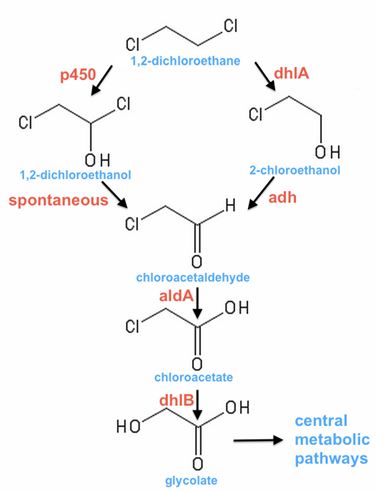Team:SydneyUni Australia/Project/Background
From 2013.igem.org


Project Background
There is evidence of settlement by the Eora people (Indigenous Australians) in Sydney for many thousands of years. Many household English words are inherited from their language, including dingo, wombat, waratah, wallaby, etc. The best explanation for this is that when Captain Cook initially landed on the continent of Australia, way back in 1770 at Botany Bay, the Eora people were first he met. Thus Botany Bay is not only a significant historical landmark, but represents a collision of worlds, languages, cultures, and relationships to the environment.
Today, Botany Bay is part of the modern city of Sydney - it’s a suburb with schools, supermarkets, churches, and so on. It’s also been the site of an Orica (previously ICI Australia) manufacturing plant since the 1940’s. During this period of industrial activity in a period of relatively absent environmental awareness and regulation, there has been extensive chemical pollution of the Orica site, leading to contamination of the groundwater at Botany Bay. In 1998, a plume of DCA (1,2-dichloroethane) was discovered in the groundwater. Since then the contamination has been tracked, treated, modelled, debated, and more. Residents are banned from using the water for drinking, washing, watering the garden - anything.
The pollution at Botany Bay is not only a hassle for local residents or a justification for Orica’s new Groundwater Treatment Plant. It is a symbol of a people out of touch with their environment, who forget their own national story, who solve the problems they cause by looking elsewhere - bringing in water for domestic use and attempting to export chlorinated hydrocarbons overseas.
References:
- http://www.oricabotanytransformation.com/?page=25
- http://en.wikipedia.org/wiki/Eora
- http://www.water.nsw.gov.au/Water-management/Water-quality/Groundwater/Botany-Sand-Beds-aquifer/Botany-Sands-Aquifer/default.aspx
Questions:
- Is it true that Homebush Bay and Sydney Harbour have similar chlorinated aliphatic contamination? See - http://www.babs.unsw.edu.au/research/bioremediation-contaminated-groundwater
OTHER STUFF - JUST TESTING ATM
Brief Project Description
Background
- 1,2-dichloroethane (DCA) is part of a family of chlorinated hydrocarbons that are primarily derived from industrial solvents such as tetrachloroethene (PCE) and trichloroethene (TCE). Some of these organochlorines are toxic, carcinogenic and generally nasty.
- DCA is a soluble and mobile contaminant of the groundwater in Botany Bay, Sydney, but also elsewhere around the world.
- Conventional treatment involves significant costs, such as the pumping and heat-stripping of groundwater at Botany Bay. A biological alternative may be cheaper and more effective.
- A suite of techniques (including sampling of contaminated sites, growth in bioreactors with selective conditions and protein engineering) have led to an understanding that there are two primary pathways of DCA-degradation (Fig. 1).
Goals
- Construct a BioBrick-compatible vector inspired by the broad host range vector, pBBR1MCS2.
- Construct and compare two of the proposed pathways of DCA biodegradation.
- Characterise the components of the DCA-degradation pathway for admission into the Registry of Standard Parts.
- (If we get time!) Demonstrate the integration of our the pathway in the chromosome of Pseudomonas stutzeri via natural transformation and site-specific recombination.
 "
"


